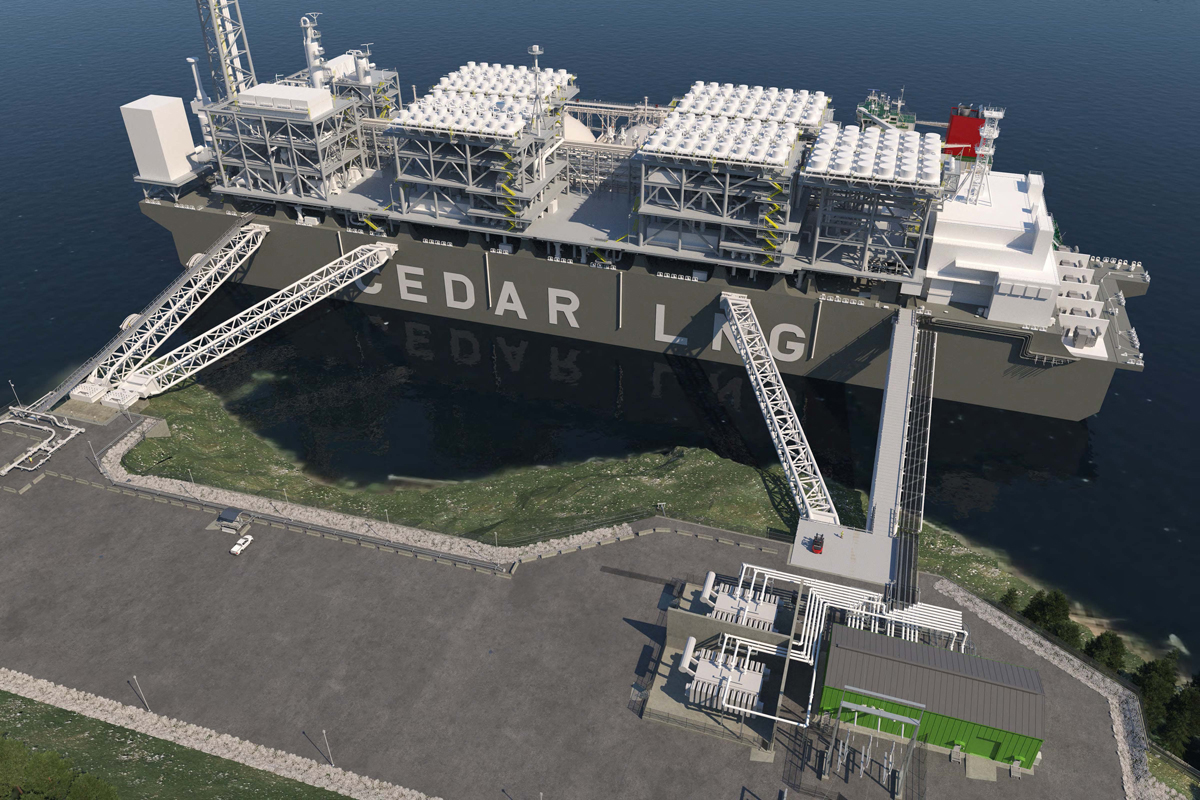Haisla Nation’s Cedar LNG project goes ahead in B.C.
The $5.5-billion project is expected to be in service near the end of 2028.

Key Takeaways:
- The project has a total estimated cost of approximately $5.5 billion.
- The floating liquefied natural gas facility is being designed and constructed by Samsung Heavy Industries and Black & Veatch, global industry leaders in marine construction and FLNG solutions.
- Given the project will be a floating LNG facility, manufactured in the controlled conditions of a shipyard, it is expected that the project will have lower construction and execution risk.
- The project is expected to create up to 500 jobs during peak construction and approximately 100 full-time jobs during operation.
- The project is anticipated to be in service in late 2028.
The Whole Story:
Cedar LNG, the world’s first Indigenous majority-owned LNG project, is moving ahead.
The Haisla Nation and Pembina Pipeline Corporation, partners in Cedar LNG Partners LP, have announced a positive Final Investment Decision on the Cedar LNG Project, a floating liquefied natural gas facility with a nameplate capacity of 3.3 million tonnes per annum, located in the traditional territory of the Haisla Nation, on Canada’s West Coast.
Cedar LNG is majority-owned by the Haisla Nation, in partnership with Pembina Pipeline Corporation, with 50.1% and 49.9% ownership, respectively.
“As a result of the Haisla Nation’s vision and determination, today we are demonstrating Canada’s ability to sustainably grow its LNG export sector to support the global clean energy transition,” said Doug Arnell, chief executive officer of Cedar LNG. “Moreover, the Haisla Nation and Pembina, as true partners, are demonstrating a new model for how industry and Indigenous communities can work together for mutual benefit.”
The project team believes it is strategically positioned to leverage Canada’s natural gas supply from the Western Canadian Sedimentary Basin to access global markets and is expected to achieve higher prices for Canadian producers and enhance global energy security.
The Cedar LNG team added that they made several innovative design decisions to minimize the project’s environmental footprint and ensure it is one of the lowest-emitting LNG facilities in the world. One of the most important decisions was to power the facility with renewable electricity from BC Hydro. In addition, the choice of site location allows the Project to leverage existing LNG infrastructure, including the Coastal GasLink pipeline, a deep-water port, roads, and other infrastructure.
Under a long-term transportation agreement with Coastal GasLink Pipeline Limited Partnership, the Cedar LNG facility will receive 400 million cubic feet per day of Canadian natural gas via the Coastal GasLink pipeline.
The project’s West Coast location provides one of the shortest shipping routes to key Asian markets. The Douglas Channel, leading to and from the site, offers an established, reliable shipping route and deepwater marine inlet, with year-round ice-free conditions.
“Together with our partner, the Haisla Nation, we are honoured to have made Cedar LNG a reality. This is a historic moment, and we are proud to be moving forward with a project that will deliver industry-leading, low-carbon, cost-competitive Canadian LNG to overseas markets and contribute to global energy security, while delivering jobs and economic prosperity to the local region,” said Scott Burrows, Pembina’s president and chief executive officer. “Cedar LNG aligns perfectly with our strategy and where we want to be as a company moving forward. The Cedar LNG Project will enhance the resiliency of Pembina’s business, provide much needed new egress and greater access to global markets for our customers, and reflects the Haisla Nation and Pembina’s shared values and commitment to supporting a more sustainable future.”
Cedar LNG Announces Positive Final Investment Decision from Cedar LNG on Vimeo.
